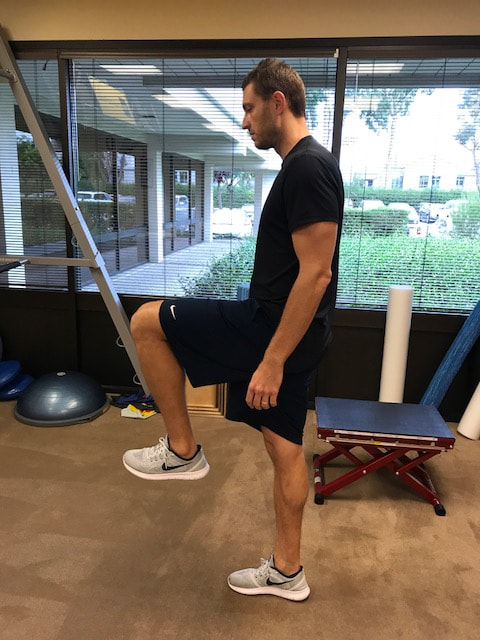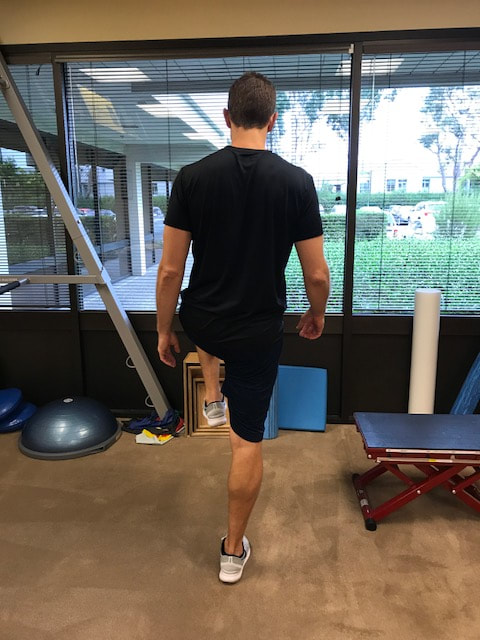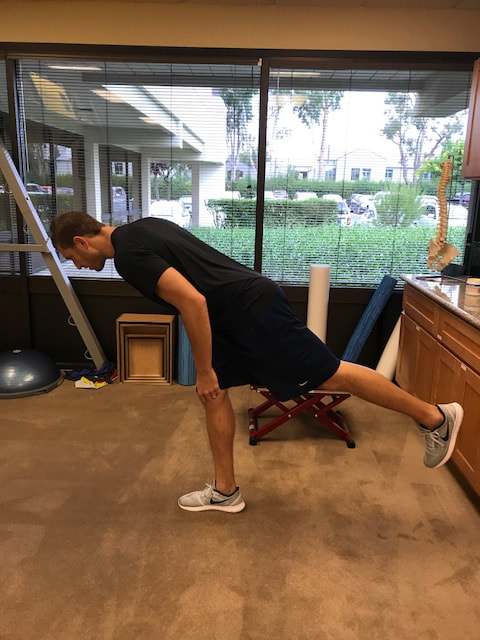|
Strength in your hips is imperative to help take pressure off your low back and knees. Your glutes are some of the largest muscles in your body and often times are under trained. This leaves your low back or knees, joints that are not surrounded by much musculature, to do the 'heavy lifting.' Single Leg DeadliftThe Single Leg Deadlift is the second of three exercises I commonly prescribe to work on hip and knee strength and stability. It is a challenging exercise that requires good balance but can still be tailored to any fitness level. Step 1: Single Leg Balance Start by standing on the leg you are intending to strengthen. That knee should be locked straight with that glut tight. You can see from the side picture, I can draw a straight line from my shoulder through my hip to my ankle. From the back, I can draw a straight line from my head through my hip to my ankle. The opposite hip and knee are bent to a 90 degree angle. If this is challenging, you can use a foam roll or counter to help with support. Step 2: Swing Next, swing the floating leg back, allowing the knee on the stance leg to bend slightly (no more than 20 degrees). Hold this position for 1-3 seconds and return to the starting position, never letting your swing leg touch the ground. It is crucial to keep your pelvis level with the ground. I often use my arm as a guide to help me make sure this happens. A mirror is also a great feedback system. If the pelvis rotates, the glut is not doing the work, and you are not getting benefit from the exercise. Regression: use a foam roll or counter to help with balance
Progression: hold a weight on the opposite side of the stance leg; the arm should be loose and the weight does not need to touch the ground. 10 reps, 3 sets. Stay tuned for the last exercise: Single Leg Balance Press. In the meantime, if you have any questions, feel free to ask. Dominick
2 Comments
So much to do with squatting now-a-days...in CrossFit, creating a more "defined" butt, improving athletic performance, etc. But are you doing it correctly? MORE IMPORTANTLY!!! Are you ABLE TO PERFORM IT CORRECTLY?? If not, research points to increased risk of injury.
Here is the test: In a mirror, raise your arms overhead so that it is in line with your ears (if able). With a shoulder width and barefoot stance, squat down as low as you are able. How do you do? Do you fall into one of the six pictures below? If so, you have limitations that should and can be remedied with easy treatments and simple exercises that can be demonstrated by your physical therapist. |
AuthorThe therapists at SRVPT have a variety of backgrounds and are interested in sharing our knowledge with you! Check out their bios for more specific information. Archives
April 2024
Categories
All
|
|
San Ramon Valley Physical Therapy proudly serves the Alamo, Danville, San Ramon, Dublin, Pleasanton areas, along the 680 corridor.
© COPYRIGHT 2023 ALL RIGHTS RESERVED |







 RSS Feed
RSS Feed
